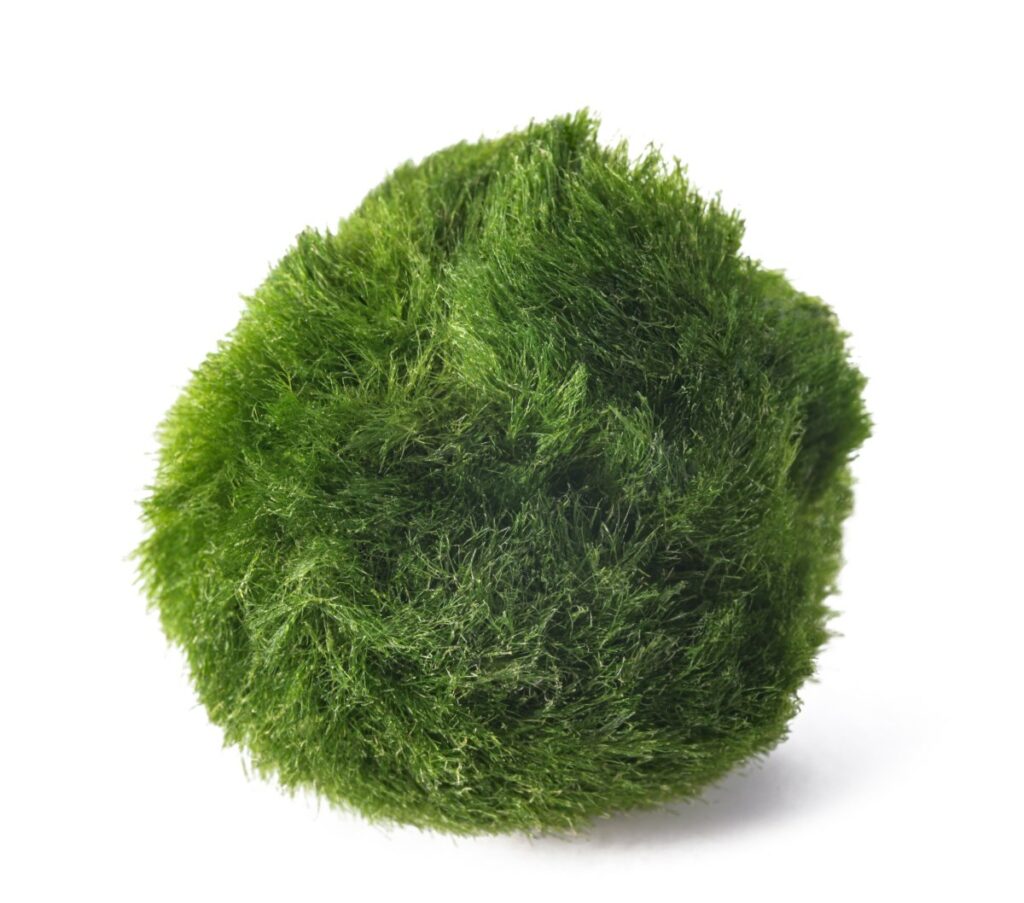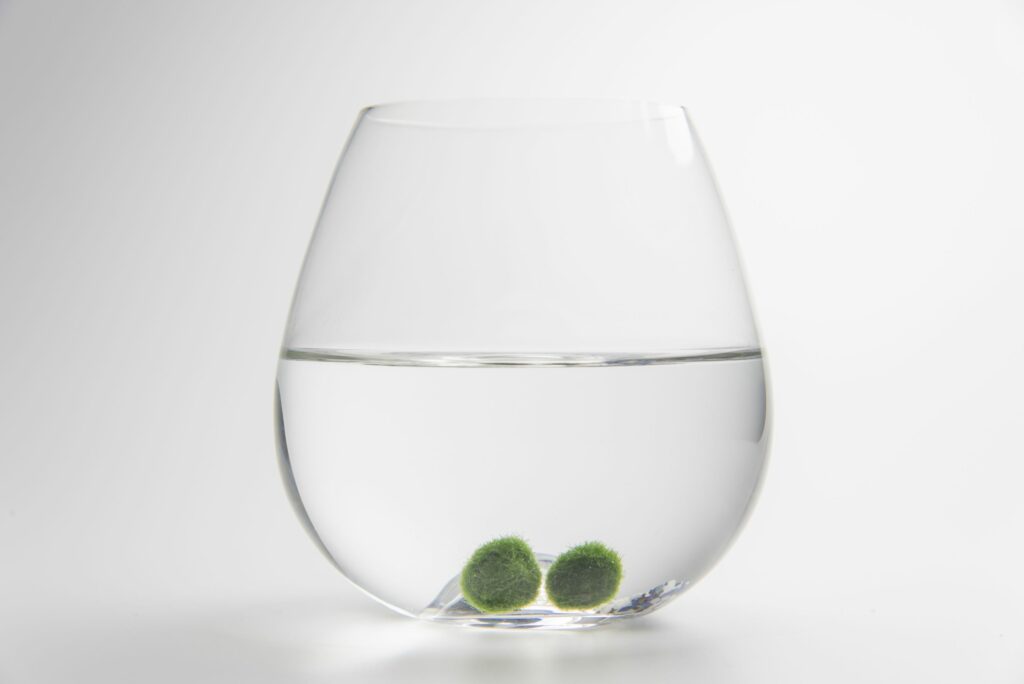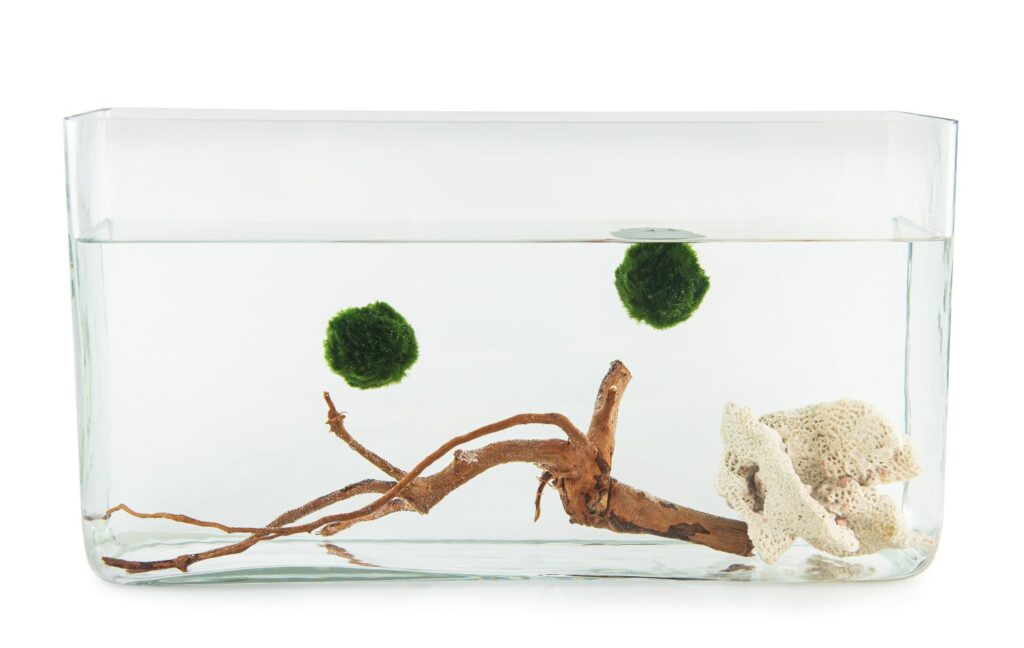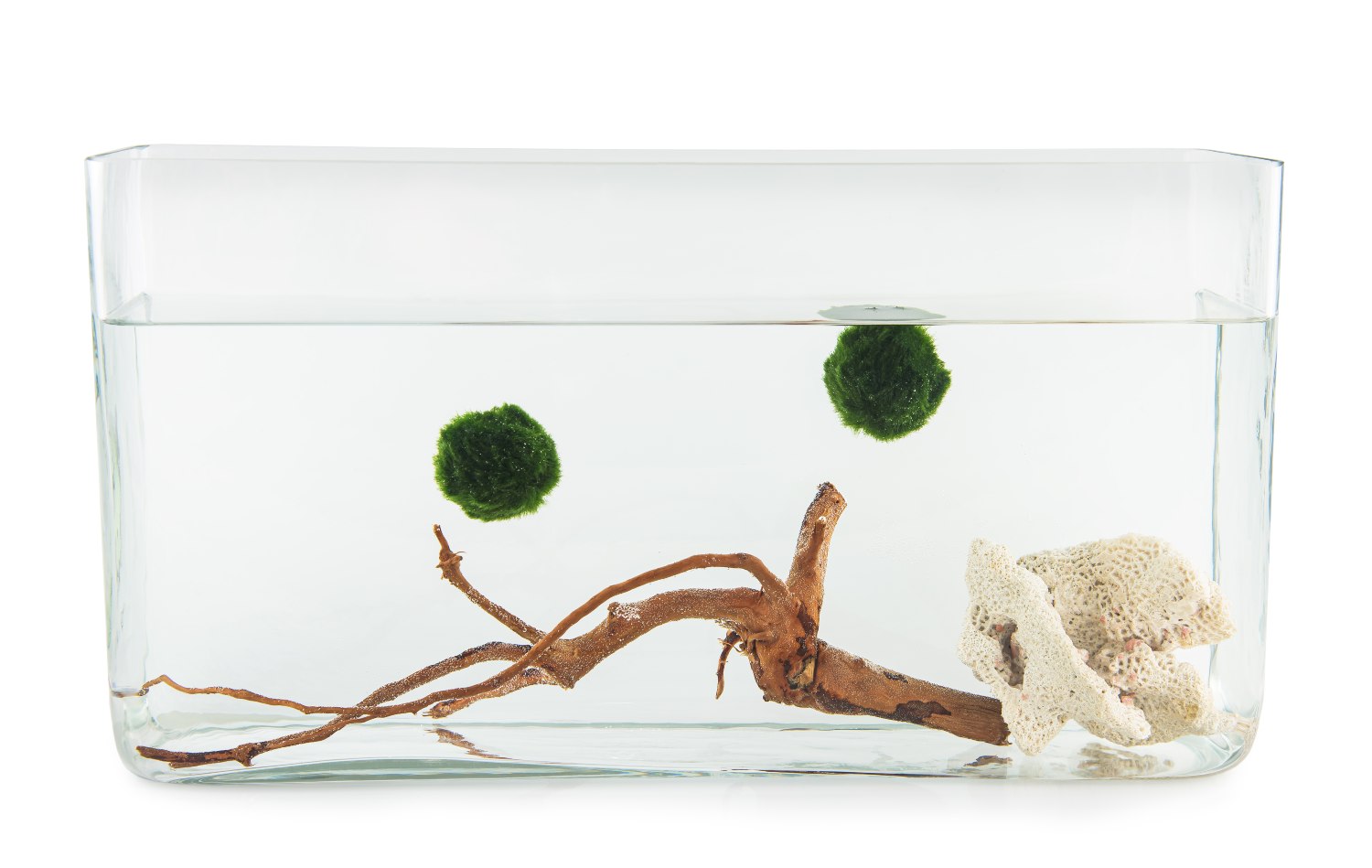Marimo moss balls are knowing for adding a subtle “wow” factor to home tanks, and all around the world, aquarists want to add this popular aquatic plant to their tank. But are these aquatic plants safe for betta fish?
In short—yes. Marimo moss balls are the perfect addition to your betta fish tank. Let’s learn why, what makes Marimo moss balls so unique, and how to care for them so they look fantastic in your tank all year round.
Why marimo moss balls make great plants for betta fish tanks
The original habitat of bettas is dense and murky and has plenty of plants that provide lots of hiding places for a betta fish. Therefore, bettas prefer a similar setting in their aquarium as well.
Adding in a Marimo moss ball to your betta fish’s tank is not only aesthetically pleasing, but it will give your betta fish places to hide, reduce stress, and overall, improve the health of your betta.
But there are some factors you need to consider while adding the moss ball to the betta aquarium. Keep reading to learn what things you need to be careful about with this moss ball.
What are marimo moss balls?

Marimo moss balls are, as the name suggests, balls of green algae. The scientific name for moss balls is Aegagropila Linnaeii, but most people refer to them as moss balls. You make also hear them refered to by their others name such as Marimo, Seaweed ball, Mossimo, Algae ball, Marimo moss ball, and Lake ball. Moss balls have very slow growth and grow only 2 inches every year.
As a bonus, they have incredibly long lifespans and are great investments for aquariums because as they stay good for as long as 100 years. And despite looking like a hard ball, there is actually no hard core inside these moss balls. They are entirely made of green algae.
Interestingly, Marimo moss balls are actually not plants. These are a form of algae found in lakes, especially in countries like Japan, Australia, Scotland, Iceland, and Estonia, and are a protected species.
Fun fact: Lake Akan in Japan has the largest moss ball with a diameter of 11.8 inches.
Marimo moss ball benefits

Marimo moss balls are one of the best accessories for a betta’s tank. As moss balls don’t have any solid core, they keep rolling in the tank. Bettas love to engage with tank substrates; hence they would love playing with these algae balls.
Marimo balls are super soft and light and won’t injure your betta’s delicate fins, even if the fish rubs its body against them.
Moreover, Marimo moss balls produce no waste and, at the same time, retain beneficial bacteria—the algae reduce the level of nitrite particles and add additional oxygen to the water.
If you own a betta fish, you know how sensitive they are to their tank water. Poor water conditions make the fish stressed, causing skin disease—like stress stripes or fin loss—and other diseases.
Marimo moss balls work as a natural tank filter that keeps the water safe for bettas. These soft velvety balls are not only good as tank décor but also cleanse the aquarium water.
Marimo moss ball care
Despite the soft and velvety texture, Marimo moss balls are extremely hardy and robust. They can withstand different water conditions and caring for them is quite simple.

Light requirements
As moss balls are found in deep, dark bodies of water, they don’t need much bright light. Which works out well, as betta fish also don’t like lots of light. Together, you can keep your betta fish and moss balls in the same tank without worrying about conflicting lighting conditions. A little natural or artificial light is enough for photosynthesis for these aquatic plants. In fact, you should try to keep the aquarium away from harsh direct sunlight as much as possible.
Water changing
Most people think that these moss balls are super fancy and high-maintenance. But that’s not true. Due to their slow growth, Marimo moss balls only require occasional maintenance compared to other plants.
When you change the tank water, take out the Marimo moss balls and gently squeeze the water out and rinse them in the tank water.
The Marimo ball will slowly soak in water and sink back into the tank bottom. Please note that these balls will get flat if they remain still for a long time.
Do keep a watch, and if you notice them flattening out, shake them slightly. Lastly, these plants need no fertilizers. They produce their own food through photosynthesis, saving you time and effort trying to keep the plants alive.
Brown spots
You may notice brown spots; they are completely normal. You can remove the brown spots by placing your moss ball in a separate container of water with some extra salt for a bit. Once the spots are gone, place it back in the tank.
Signs of sick Marimo moss balls
Keeping Marimo moss balls alive isn’t very hard. However, the moss may die if you ignore cleaning or maintaining it. The following are some of the signs of sick or dying Marimo balls-
Brown moss balls
The moss balls turn brown if not in the best condition. There are different causes of the brown side, such as-
- Dirt build-up. The dirt build will turn the ball brownish grey. This is not a serious condition; you can revive it to its earlier state just by cleaning it.
- See if the moss ball is turning brown from one side, which could be due to a lack of sunlight. Even though moss balls don’t need lots of sunlight, they require a little for photosynthesis. If they do not get it, the ball turns brown on one side.
Yellowing Moss Balls
The Marimo moss ball is quite sensitive to specific chemicals like chlorine and chloramine, which are common in tap water.
The ball could turn yellow if you accidentally wash it in untreated tap water. To cure the problem, clean moss balls with aquarium water and put them back in the betta tanks. You’ll see the Marimo moss ball coming to its original color within a few days.
White Moss Balls
The reason the Marimo balls turn white is exposure to too much light. Solving the issue is easy. Simply shift the tank to a shady place or shift the Marimo balls under the floating plants.
Algae
Algae is a common thing in fish tanks. It grows on the tank walls and aquarium decorations and can also grow on the moss balls, making them slimy. Cleaning the moss balls and getting rid of the slime is crucial to saving them.
Otherwise, the Marimo moss balls will suffocate and die due to the lack of nutrition. Take out the moss balls from the fish tank, and remove the slimy coat by gently rubbing them. Once cleaned, transfer them back into the tank.
Blackened Marimo moss balls
A black moss ball is a sign of danger. Moss balls turn black only when they are dying. However, you can still save them if you notice them turning black early.
Clean the black dots and gently wash the moss ball in aquarium water. After that, carefully roll it so that it’s not flat and comes back into its original form.
The moss ball is disintegrating
The moss balls falling apart is another sign that the algae ball is not in perfect health. But this is not a serious concern, and you can revive it by collecting the pieces and rolling them into a spherical shape.
Put the balls back into the aquarium but don’t forget to rotate them and give them enough sunlight.
As you can see, bringing the moss balls back to life only takes minimal effort. You only have to monitor them regularly and check for probable signs of sickness or damage.
Moss ball propogation
Did you know you can actually propagate your moss ball? To do that, take the moss balls out of the aquarium, and squeeze out the water.
Then cut the balls into half, or if the ball is large enough, cut it into quarters. Then take the new pieces and simply roll them into smaller moss balls. Put all the pieces back into the water, and they will start growing.
For the first few days, keep rotating the new Marimo moss balls so that it gets light from all sides. The natural reproduction system of the Marimo moss ball is pretty slow, and it may take years to grow into a full-size ball. This is why propagating it yourself is the best thing to do.
Where to buy Marimo moss balls
Marimo moss balls are easily available in any local fish store and also online. While buying a ball from the store, check whether it is in the best condition or not. It should be a nice green color and should not have any whitish or brown side.
And while buying them online, read the product details well. You also get a fake Marimo moss ball online. Hence, check if the one you’re buying is real or fake.
Adding marimo moss ball to your betta tank
If you are looking for attractive live plants for your betta’s tank, the Marimo moss ball is a great option. It keeps the tank clean, can survive with other species of plants, and is good for the betta fish as well.
Marimo moss ball is also easier to clean and will keep the tank environment healthy.

